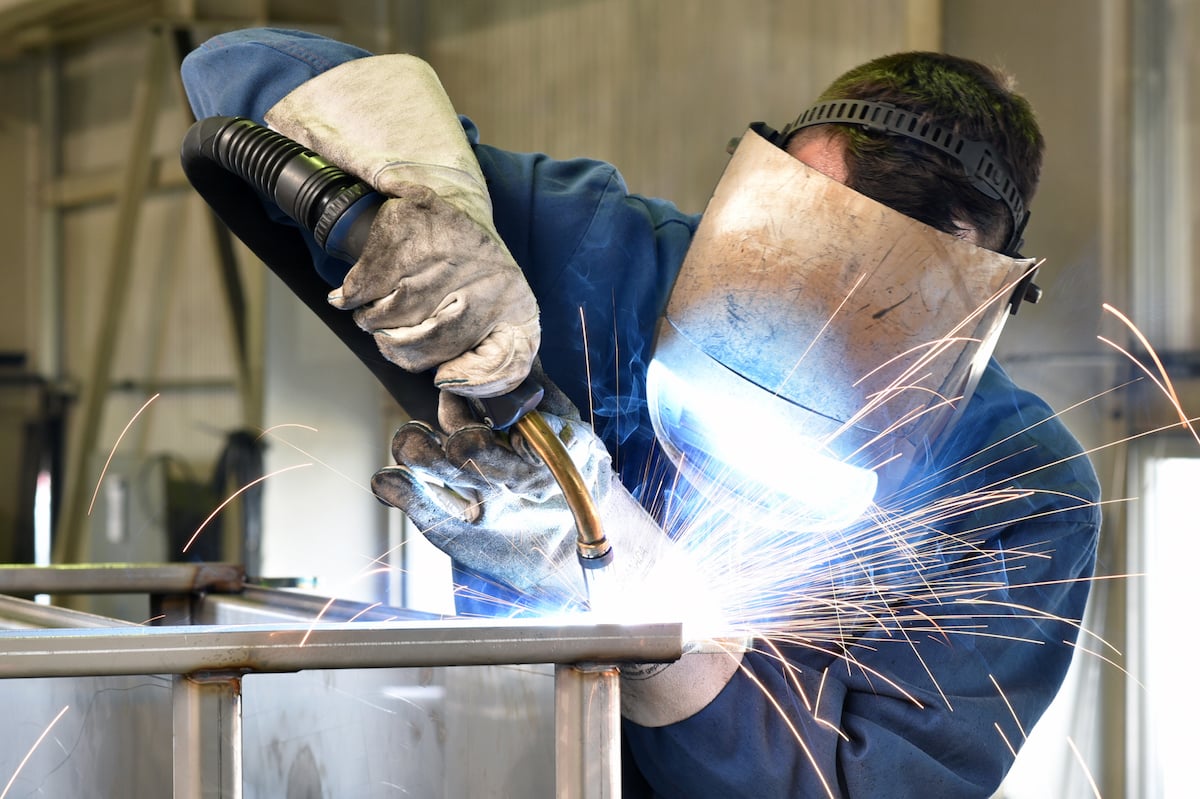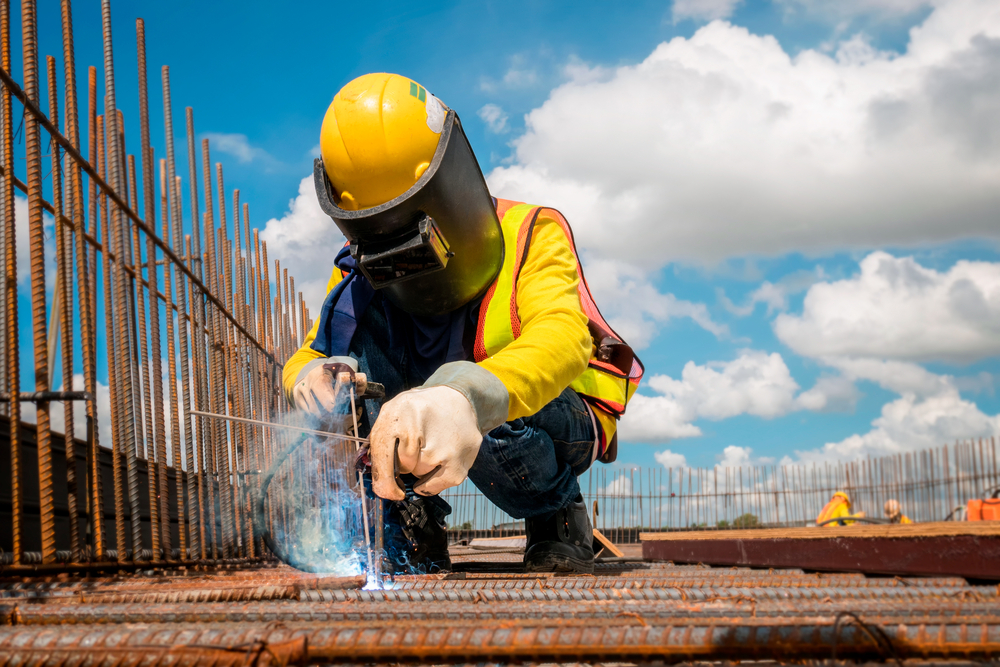Common Welding Repair Issues and Exactly How to Address Them Efficiently
Welding repair work often encounter a range of issues that can endanger the integrity of the end product. Typical troubles include inadequate penetration, porosity, and misalignment, amongst others. Each problem presents unique difficulties that require details approaches for resolution. Comprehending these concerns is vital for welders intending to enhance their abilities and outcomes. This discussion will certainly check out these usual welding repair service issues and effective techniques to address them.
Insufficient Infiltration
Inadequate penetration occurs when the weld steel stops working to fully fuse with the base material, leading to weak joints and potential architectural failures. This problem often comes from inadequate warm input, inaccurate electrode angle, or improper welding speed. Welders may run into insufficient penetration as a result of a miscalculation of the needed specifications for a specific product thickness or type. Furthermore, contamination on the base material's surface area can prevent efficient bonding, worsening the trouble. To address inadequate infiltration, welders ought to ensure ideal setups on their devices and maintain a clean work surface area. Regular assessment of welds is recommended to identify any type of shortages early, permitting prompt corrections and the prevention of compromised architectural honesty in welded assemblies.
Porosity
Porosity is an usual problem in bonded joints that shows up as little gas bubbles trapped within the weld steel. This issue can compromise the integrity of the weld, resulting in minimized strength and prospective failure under anxiety. Belgrade Fabrication. Porosity generally emerges from contamination, moisture, or inappropriate welding strategies, which allow gases to leave right into the molten weld swimming pool. To resolve porosity, welders should guarantee proper surface prep work, maintain a clean workplace, and use ideal welding specifications. Furthermore, selecting the ideal filler material and shielding gas can minimize gas entrapment. Regular evaluation and screening of welds can assist determine porosity early, guaranteeing prompt restorative activities are taken, thereby maintaining the quality and integrity of the welded framework
Misalignment
Misalignment in welding can develop from various aspects, including improper arrangement and thermal expansion. Recognizing the root triggers is essential for efficient resolution. Several improvement techniques are offered to realign components and guarantee architectural integrity.
Reasons for Imbalance
Welding misalignment usually originates from a selection of underlying issues that can compromise structural honesty. One main reason is incorrect fit-up of components before welding, which can lead to voids and unequal surface areas. Variants in thermal development throughout the welding process can also lead to distortion, particularly if the products being signed up with have different coefficients of expansion. Furthermore, poor clamping and fixturing might stop working to hold components firmly in location, leading to motion during welding. Poorly kept tools, including welding makers and tools, may present disparities in the weld grain, further adding to imbalance. Driver error, stemming from insufficient training or experience, can also play a significant function in creating misaligned welds.

Improvement Techniques Available
Addressing imbalance effectively requires a combination of rehabilitative techniques customized to the particular issues available. One usual method is the use of components or jigs to hold parts in the right setting during welding, ensuring consistent positioning. In addition, pre-heating the materials can help decrease distortion and enhance fit-up. For significant imbalance, mechanical adjustment methods, such as utilizing hydraulic jacks or clamps, can be used to deal with the position prior to welding. Post-weld heat therapy might also be necessary to relieve anxieties triggered by imbalance. Mindful evaluation and modification throughout the configuration phase can avoid imbalance problems from becoming substantial troubles, advertising a smoother welding procedure and boosting overall structural stability.
Distortion
Distortion is a common challenge in welding that can develop from various variables, consisting of uneven heating & cooling. Recognizing the reasons for distortion is necessary for carrying out reliable prevention strategies. Addressing this concern not just enhances architectural integrity however also improves the general high quality of the weld.
Sources of Distortion
When based on the extreme warm of welding, materials commonly undertake modifications that can lead to distortion. This phenomenon mostly arises from thermal growth and contraction during the welding process. As the weld location heats up, the material expands; upon air conditioning, it acquires, which can create interior stress and anxieties. In enhancement, unequal heating across a work surface can intensify these tensions, leading to warping or flexing. The kind of product additionally plays a substantial function; metals with varying thermal conductivity and coefficients of development might react in a different way, causing unpredictable distortions. Additionally, poor joint style and inadequate fixturing can add to misalignment during welding, enhancing the possibility of distortion. Understanding these reasons is crucial for effective welding repair work and avoidance techniques.
Prevention Techniques
Reliable prevention techniques for distortion throughout welding emphasis on regulating warm input and guaranteeing correct joint style. Keeping a regular warmth input aids to lessen thermal growth and tightening, which can bring about distortion. Using methods such as pre-heating the work surface can likewise reduce the temperature gradient, promoting consistent home heating. Additionally, choosing proper joint layouts, such as T-joints or lap joints, can enhance security and lower tension concentrations. Carrying out appropriate fixturing to safeguard the work surfaces in place additionally aids in keeping placement throughout the welding procedure. Ultimately, staggered welding sequences can disperse warm extra equally, protecting against local distortion. By using these approaches, welders can significantly a fantastic read decrease the likelihood of distortion and boost the general quality of their welds.
Cracking
Fracturing is a common concern encountered in welding fixings, often resulting from various variables such as improper cooling prices, product option, or inadequate joint preparation. The event of splits can considerably jeopardize the honesty of the weld, leading to prospective failings throughout procedure. To address this issue, welders should initially analyze the source, making certain that products work and appropriately selected for the certain application. Furthermore, regulating the cooling price during the welding procedure is essential; fast air conditioning can generate tension and lead to cracking. Correct joint layout and preparation also add to minimizing the threat. Applying these methods can enhance weld top quality and toughness, ultimately reducing the chance of breaking in finished weldments.

Insufficient Combination
A significant issue in welding fixings is incomplete blend, which occurs when the weld steel does not effectively bond with the base material or previous weld passes - Fabrication. This flaw can result in weak points in the joint, potentially endangering the stability of the bonded framework. Factors adding to incomplete fusion include insufficient warm input, incorrect welding method, and contamination of the surfaces being joined. To address this concern effectively, welders need to ensure correct pre-weld cleaning and surface preparation, as well as readjust their welding criteria to achieve adequate infiltration and fusion. Normal evaluation during the welding procedure can additionally help recognize insufficient blend early, permitting prompt rehabilitative actions to boost the overall top quality of the weld
Overheating
While welding repair services can improve structural honesty, overheating offers a considerable difficulty that can result in product degradation. Too much warmth during welding can modify the mechanical properties of steels, leading to decreased strength, enhanced brittleness, and bending. This sensation is particularly vital in high-stress applications where architectural integrity is vital. Recognizing getting too hot can involve visual assessments for staining or distortion, in addition to keeping track of temperature level throughout the welding procedure. To reduce the dangers associated with overheating, welders should use appropriate methods, such as managing heat input, adjusting travel rate, and using ideal filler products. Additionally, executing pre- and post-weld warm treatments can aid restore product properties and boost the pressure welding total high quality of the fixing, guaranteeing long-lasting efficiency and safety.
Regularly Asked Inquiries
What Are the Typical Signs of a Welding Issue?

Exactly How Can I Evaluate My Welds for High quality?
To examine welds for top quality, stud welder one can make use of visual inspections, ultrasonic testing, and radiographic approaches. Each strategy assures structural integrity, recognizes flaws, and validates adherence to specified requirements, ultimately enhancing the reliability of the bonded joints.
What Safety and security Safety Measures Should I Take While Welding?
When welding, one ought to prioritize security by putting on ideal personal safety equipment, ensuring appropriate air flow, protecting combustible products away, preserving a tidy workspace, and being aware of surroundings to stop accidents and injuries.
Can I Repair a Weld Without Redoing the Entire Joint?
Fixing a weld without renovating the entire joint is feasible, relying on the damages (Montana Mobile Welding and Repair Welding). Methods such as grinding, adding filler material, or making use of a welding procedure can effectively resolve certain imperfections while protecting the surrounding structure
What Devices Are Crucial for Efficient Welding Repairs?
Necessary tools for reliable welding repairs include a welding maker, cord brush, grinder, protective gear, clamps, and filler materials. Each device plays a vital function in making sure top quality and safety throughout the repair procedure. Porosity generally arises from contamination, moisture, or inappropriate welding methods, which enable gases to escape into the molten weld swimming pool. Inadequately kept tools, including welding equipments and devices, may introduce disparities in the weld grain, more contributing to misalignment. When subjected to the extreme warmth of welding, products usually undergo changes that can lead to distortion. Splitting is a typical problem run into in welding fixings, usually resulting from numerous aspects such as incorrect air conditioning prices, product option, or poor joint prep work. A significant issue in welding repair services is insufficient blend, which takes place when the weld steel does not effectively bond with the base product or previous weld passes.